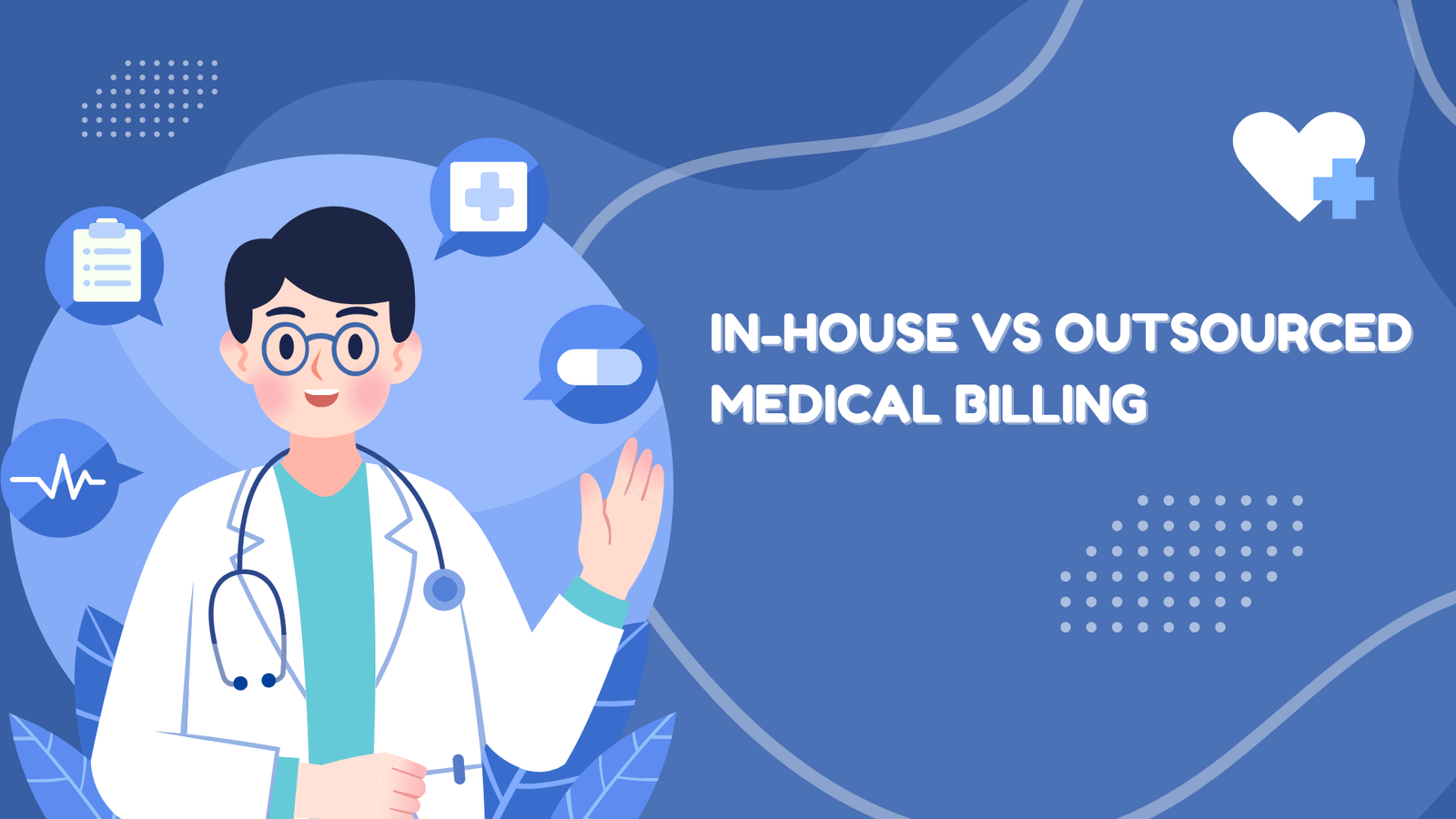For healthcare administrators and practice managers, deciding between in-house billing and outsourced revenue cycle management (RCM) is one of the most strategic decisions a practice can make. This choice impacts cash flow, compliance risk, staff efficiency, and ultimately, the time you have to focus on patient care.
As billing becomes increasingly complex due to evolving regulations, payer requirements, and technology demands, many practices are reevaluating their billing operations model. Understanding the costs, benefits, and trade-offs of each approach is crucial to making an informed decision.
How Medical Billing Has Changed
Medical billing is no longer just about administrative tasks. Modern billing requires:
- Technological expertise: proficiency in advanced RCM software
- Regulatory compliance monitoring: staying ahead of payer and government rules
- Specialized coding knowledge: across multiple specialties
- Adaptability: responding to frequent policy changes
- Data analytics: optimizing revenue cycle performance
With these demands, practices must consider whether traditional in-house billing is still the most effective model.
In-House Billing: The Traditional Model
In-house billing gives practices direct control but comes with both advantages and challenges.
Advantages of In-House Billing
Direct Control and Oversight
Running billing internally allows full visibility into daily operations, immediate implementation of process changes, and direct staff management.
Integrated Communication
Billing staff work alongside clinical teams, allowing faster resolution of documentation questions and smooth coordination between providers and billers.
Cultural Alignment
In-house staff understand organizational values and maintain a consistent approach to patient interactions, strengthening team cohesion.
Perceived Data Security
Managing billing internally ensures direct control over patient information and compliance with HIPAA regulations, without third-party access concerns.
Challenges of In-House Billing
High Fixed Costs
Salaries, benefits, office space, technology, and training costs add up quickly—often between $200,000–$400,000 annually for a mid-sized practice.
Staffing Vulnerabilities
Recruitment difficulties, turnover, and staff absences can significantly impact productivity and require months of training to replace experienced billers.
Technology Burden
Maintaining billing software, upgrades, and IT infrastructure requires ongoing investment and expertise.
Knowledge Gaps
Keeping up with complex coding and regulatory changes demands continuous education and specialized training.
Scalability Issues
Growing the practice means hiring and infrastructure expansion, which can be costly and slow.
Outsourced Billing: The Modern Approach
Many practices are turning to outsourcing to reduce costs, improve efficiency, and access specialized expertise. Partnering with an experienced medical billing provider can address most of the challenges inherent in in-house billing.
Advantages of Outsourced Billing
Variable Cost Structure
- Pay a percentage of collections (typically 4–8%)
- Costs scale with revenue, reducing financial risk
- Pay only for successful collections
Specialized Expertise
- Certified coders across multiple specialties
- Denial management specialists
- Compliance experts tracking regulatory changes
- Payer relations professionals handling complex policies
Advanced Technology
- AI-powered RCM platforms with automated claim scrubbing
- Predictive analytics to maximize revenue
- Real-time dashboards for performance tracking
Operational Continuity
- Built-in staff redundancy prevents disruption
- Coverage during vacations or turnover
- Backup procedures and disaster recovery in place
Regulatory Compliance
- Proactive monitoring of changes in billing regulations
- Staff training and compliance guidance
- Reduced audit and legal risk
Scalability
- Add providers or specialties without new infrastructure
- Handle volume fluctuations effortlessly
- Support growth without additional overhead
Performance Insights
- KPI tracking, benchmarking, and reporting
- Identification of inefficiencies and opportunities
- Recommendations for revenue optimization
Potential Challenges
Reduced Direct Control
Day-to-day activities are managed by the vendor, with oversight through metrics rather than direct supervision.
Communication Considerations
Coordination requires established protocols and may not be as immediate as in-house interactions.
Vendor Selection Is Critical
Choosing the wrong partner can disrupt operations. Thorough due diligence is essential.
Cost Comparison
In-House Billing (Annual for Mid-Sized Practice)
- Salaries & benefits: $150,000–$300,000
- Technology: $20,000–$50,000
- Office space & overhead: $10,000–$20,000 per employee
- Training & development: $2,000–$5,000 per employee
- Recruitment: $5,000–$15,000 per hire
- Total: $200,000–$400,000+
Outsourced Billing
- Fee: 4–8% of collections
- $2M revenue: $80,000–$160,000
- $3M revenue: $120,000–$240,000
- Costs scale with collections, improving profitability if revenue increases
Making Your Choice
In-House Billing May Be Best If:
- High-volume, consistent claims (1000+ per month)
- Straightforward specialty and payer mix
- Ability to recruit and retain skilled staff
- Capital for technology investment
- Direct operational control is essential
Outsourced Billing May Be Best If:
- Staffing recruitment or retention is challenging
- Collections performance is below 95%
- Denial rates exceed 5–8%
- Days in A/R are longer than 35–40
- Limited technology or analytics capabilities
- Growth or adding specialties is planned
- Leadership wants to focus on clinical operations
Hybrid Approach
Some practices maintain front-end billing in-house (patient registration, charge capture, payment collection) while outsourcing back-end operations (claims submission, denial management, complex coding, analytics). This balances control and specialized expertise.
Key Questions for Billing Partners
When evaluating an outsourcing provider, consider:
Experience and Expertise
- Specialties supported
- Provider/practice size served
- Average collection and denial rates
- Regulatory compliance procedures
Technology and Tools
- RCM platform features
- Reporting and analytics access
- Data security measures
Operations and Communication
- Staffing redundancy
- Communication protocols
- Response times for provider inquiries
Performance and Accountability
- KPIs tracked
- Reporting frequency
- Service level agreements and guarantees
Next Steps
Evaluate your current billing performance:
- Clean claim rate
- Claim denial percentage
- Days in accounts receivable
- Cost-to-collect vs. benchmarks
- Staff capacity and turnover
If gaps exist, exploring outsourced RCM solutions may improve revenue, reduce administrative burden, and let your team focus on patient care.
Regularly reassessing your billing model ensures your practice stays efficient, compliant, and financially healthy.
About Tech Essentia RCM Solutions
Tech Essentia RCM Solutions helps healthcare organizations optimize revenue cycle performance through intelligent automation, specialized expertise, and dedicated support. Learn more at https://billing.techessentia.com/.


